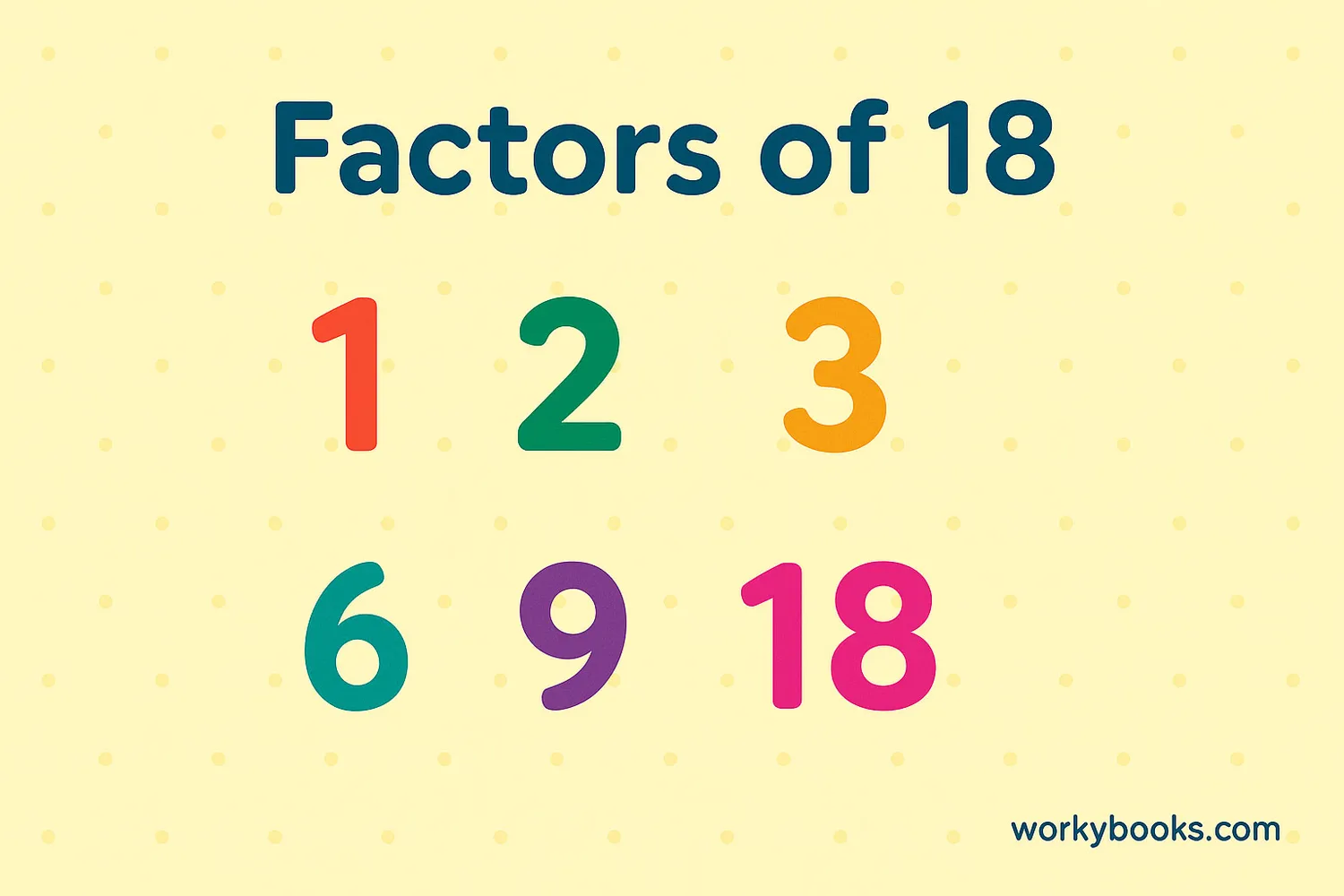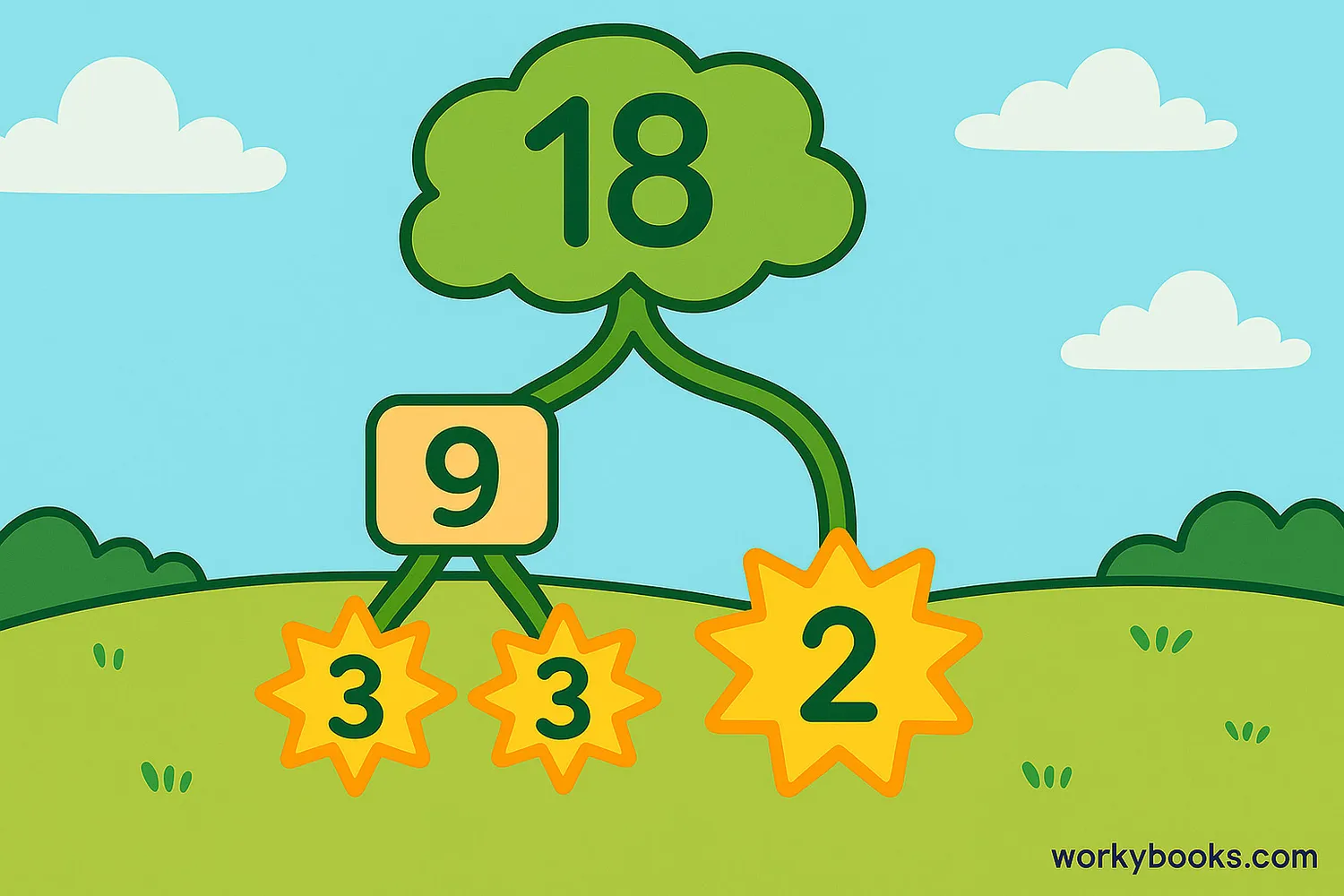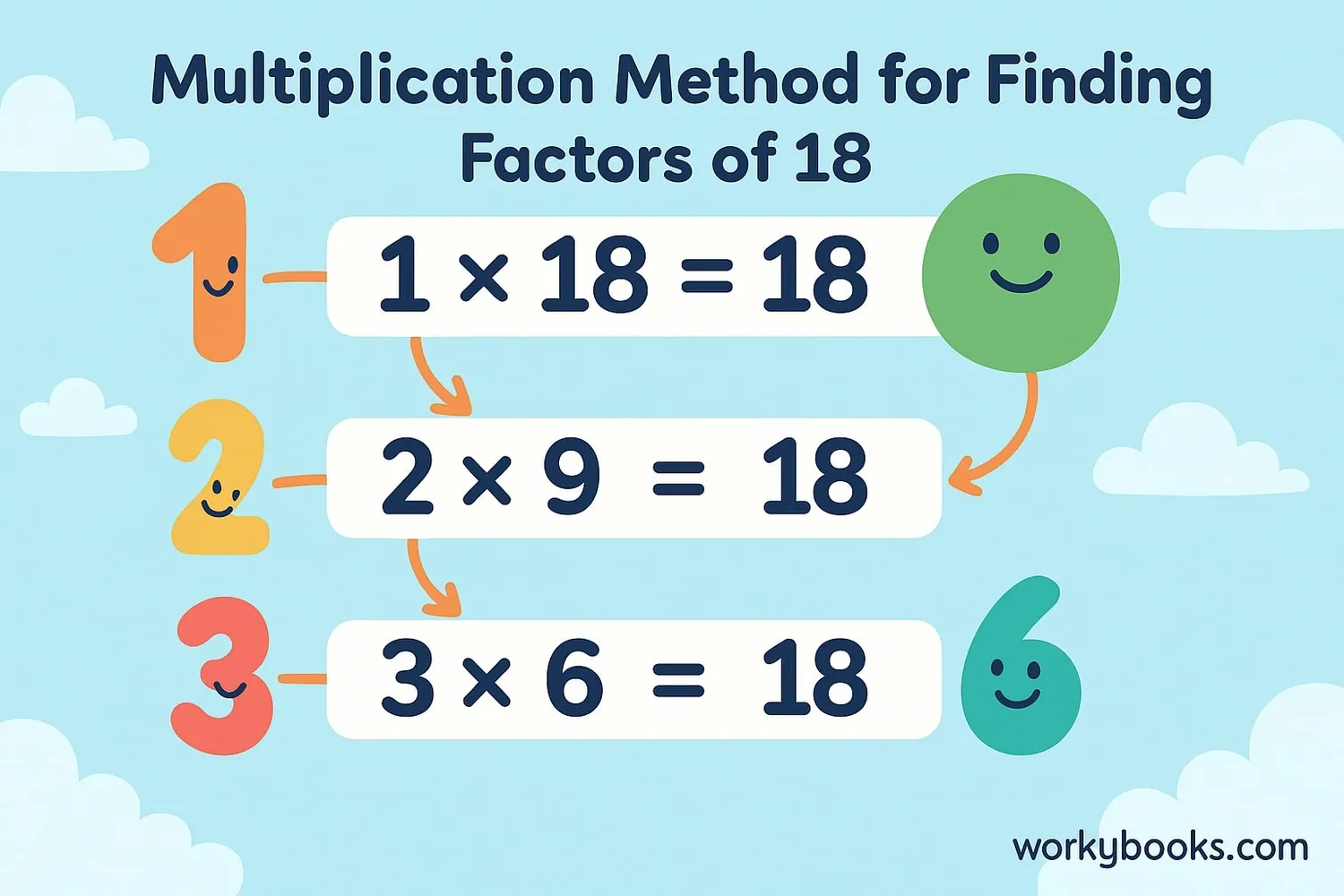Factors of 18 - Definition, Examples, Quiz, FAQ, Trivia
Learn about factors, factor pairs, and prime factors with simple explanations and activities
What are Factors?

Factors are numbers that we multiply together to get another number. Think of them as the building blocks of multiplication!
For example, when we multiply 3 × 6, we get 18. So 3 and 6 are both factors of 18. Factors always come in pairs that multiply to give the original number.
Every number has at least two factors: 1 and itself. For 18, that means 1 and 18 are factors. We can find factors by seeing which numbers divide evenly into 18 without leaving a remainder.
Key Concept
A factor of a number divides that number exactly with no remainder.
Finding Factors of 18

To find all the factors of 18, we can list the numbers that divide evenly into 18:
All Factors of 18
These are all the numbers that divide 18 without leaving a remainder.
18 ÷ 1 = 18 → 1 and 18 are factors
18 ÷ 2 = 9 → 2 and 9 are factors
18 ÷ 3 = 6 → 3 and 6 are factors
18 ÷ 4 = 4.5 (not a whole number) → 4 is not a factor
18 ÷ 5 = 3.6 (not a whole number) → 5 is not a factor
18 ÷ 6 = 3 → we already have 6 and 3
...and so on up to 18 ÷ 18 = 1
Remember
Every number has factors, and the factors always come in pairs that multiply to the original number.
Factor Tree Method

A factor tree helps us break down a number into its prime factors. Prime factors are the smallest prime numbers that multiply together to make the original number. Let's create a factor tree for 18:
Step 1: Start with 18 and find two factors: 2 × 9
Step 2: Since 2 is already prime, we circle it
Step 3: Break down 9 into 3 × 3
Step 4: Both 3s are prime numbers, so we circle them
The prime factors of 18 are 2 × 3 × 3. We can also write this as 2 × 3².
Prime Factorization
This shows that 18 is made by multiplying two 3s and one 2.
Remember
Prime factors are the smallest prime numbers that multiply to make the original number.
Factor Pairs and Rainbow

Factor pairs are two numbers that multiply together to make the original number. For 18, we have three factor pairs:
Rainbow Tip
The factor rainbow helps us make sure we don't miss any factor pairs when listing them!
Factors Practice Quiz
Test your knowledge about factors with this 5-question quiz. Choose the correct answer for each question.
Frequently Asked Questions
Here are answers to common questions about factors:
Math Trivia
Discover interesting facts about numbers and factors:
Perfect Numbers
A perfect number equals the sum of its proper factors (excluding itself). The first perfect number is 6 because 1 + 2 + 3 = 6. The next is 28 (1+2+4+7+14=28).
Abundant Numbers
An abundant number has factors that add up to more than the number itself. 18 is abundant because its factors (1+2+3+6+9=21) total more than 18.
Prime Time
The number 18 is a composite number because it has more than two factors. Prime numbers have exactly two factors: 1 and themselves.
Factor Fun
The number with the most factors under 100 is 60, which has 12 factors: 1, 2, 3, 4, 5, 6, 10, 12, 15, 20, 30, 60.


